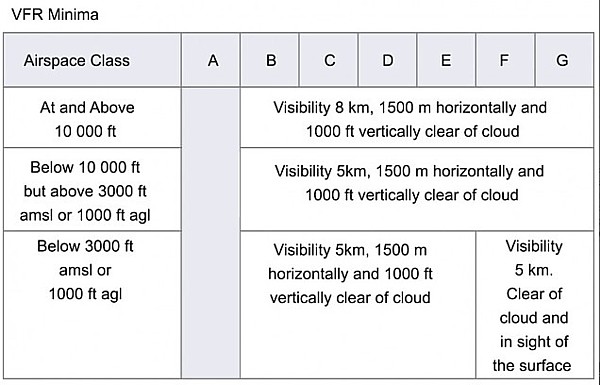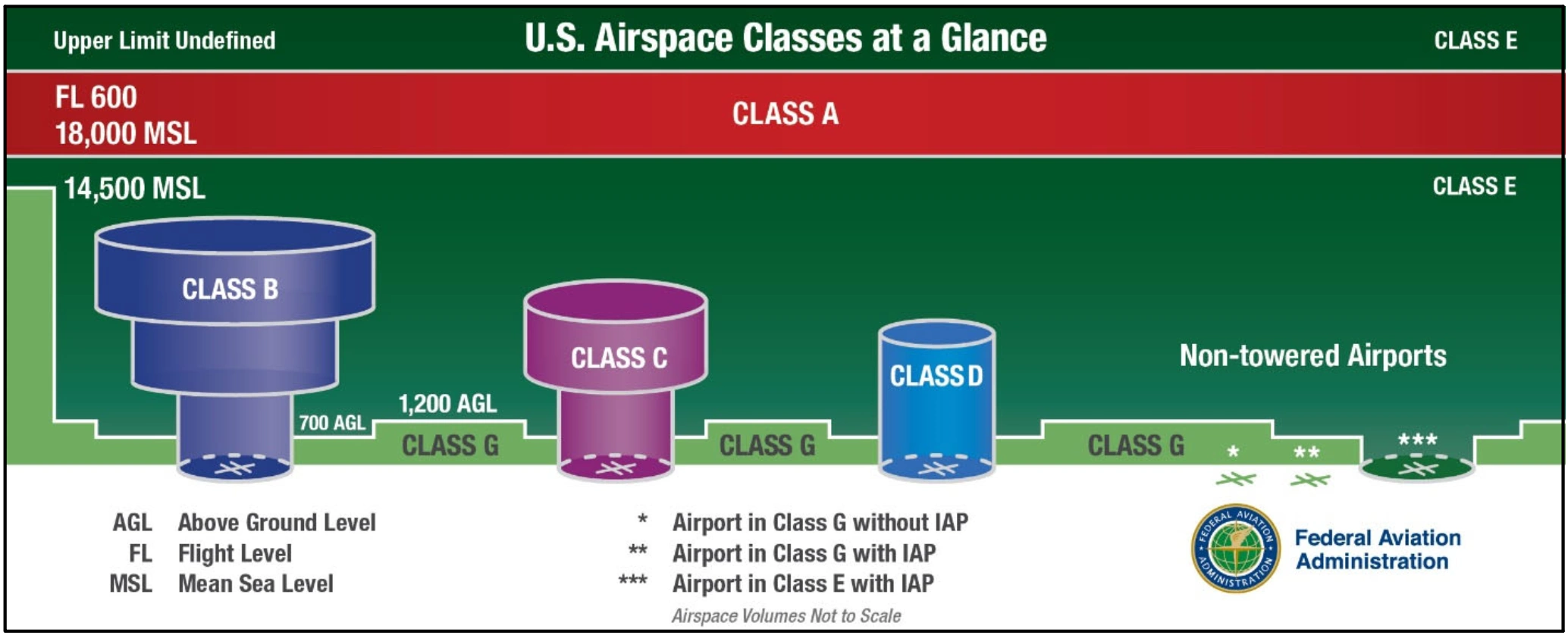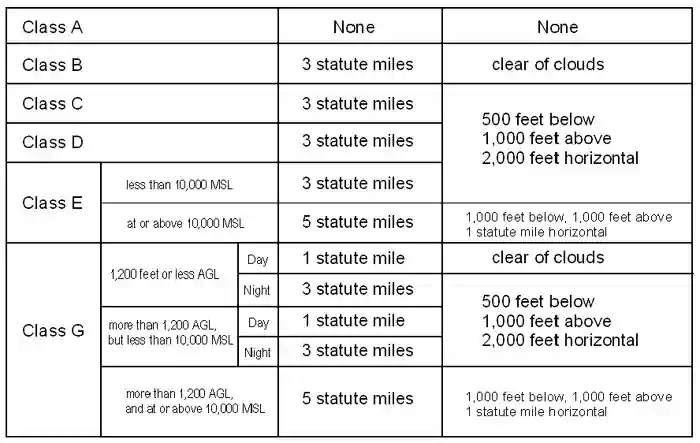class g airspace visibility requirements
Restricted and prohibited areas. Operations in Class C airspace.

Airspace Classes Explained The Ultimate Guide For Beginners
Operations in Class D airspace.

. Unless otherwise authorized or required by the Air Traffic Control ATC facility having jurisdiction over the Class D airspace area each person operating an aircraft in Class D airspace must comply. Class E airspace at and above 3000 feet MSL. Any visual or electronic device airborne or on the surface which provides point-to-point guidance information or position data to aircraft in flight.
Operating on or in the vicinity of an airport in Class E airspace. Within 30 miles of a Class B airspace primary airport below 10000 feet MSL commonly referred to as the Mode C Veil. Operating on or in the vicinity of an airport in Class G airspace.
All operations in Class A Class B Class C and Class D airspace or Class E airspace designated for an airport must receive prior ATC authorization as required in 10317 of this part. Airspace administration in Australia is generally aligned with the International Civil Aviation Organization ICAOprescribed airspace classes and associated levels of service as set out in Annex 11 to the Convention on International Civil Aviation 1944 Chicago Convention. Air navigation facilities equipment and services airports or landing areas.
Requirements for a flying in a Class D airspace are relatively minor and obtaining approval to enter is also very simple once you know what to do. For parttime Class D surface areas that change to Class G airspace the arrival extensions will become Class G at the same time Conclusion. To prepare for flying in Class D airspace simply learn what Class D airspace is where it is located what the operational requirements and restrictions are and how to get approval to enter.
No person may operate an ultralight vehicle when the flight visibility or distance from clouds is less than that in the table found below. The common network of US. Operations in Class B airspace.
Class E airspace at and above 10000 feet MSL within the 48 contiguous states and the District of Columbia excluding the airspace at and below 2500 feet AGL.

Faa Airspace For Vfr Flight Youtube
Confined Areas Helicopterblog Com

The Airline Pilots Forum And Resource

Vfr Cloud Clearances Pilot Training For Ga

Uncontrolled And Controlled Airspace

This Is How Class G Airspace Works Boldmethod

Uncontrolled And Controlled Airspace

This Is How Class G Airspace Works Boldmethod

Visual Meteorological Conditions Wikiwand
How To Remember Vfr Weather Minimums Bobbie Lind

Why Are There Mandatory Cloud Clearance Requirements Boldmethod

Helicopter Instrument Procedures Part Three
How To Remember Vfr Weather Minimums Bobbie Lind

Uncontrolled And Controlled Airspace
Regulations Vfr Minimums Learn To Fly Blog Asa Aviation Supplies Academics Inc


